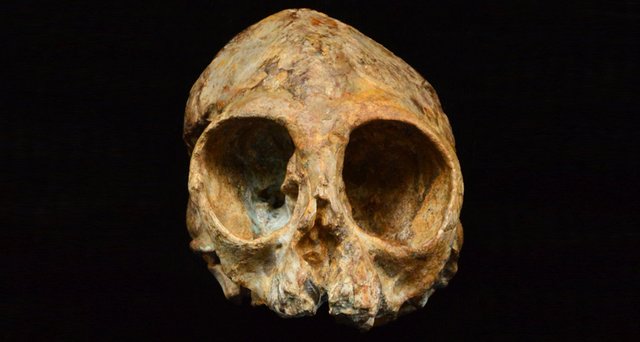Infant ape’s tiny skull could have a big impact on ape evolution
Rare 13-million-year-old fossil represents a new species
A 13-million-year-old infant’s skull, discovered in Africa in 2014, comes from a new species of ape that may not be far removed from the common ancestor of living apes and humans.
The tiny find, about the size of a lemon, is one of the most complete skulls known of any extinct ape that inhabited Africa, Asia or Europe between 25 million and 5 million years ago, researchers report in the Aug. 10 Nature. The fossil provides the most detailed look to date at a member of a line of African primates that are now candidates for central players in the evolution of present-day apes and humans.
Most fossils from more than 40 known extinct ape species amount to no more than jaw fragments or a few isolated teeth. A local fossil hunter spotted the nearly complete skull in rock layers located near Kenya’s Lake Turkana. Members of a team led by paleoanthropologist Isaiah Nengo estimated the fossil’s age by assessing radioactive forms of the element argon in surrounding rock, which decay at a known rate.
Comparisons with other African ape fossils indicate that the infant’s skull belongs to a new species that the researchers named Nyanzapithecus alesi. Other species in this genus, previously known from jaws and teeth, date to as early as around 25 million years ago.
“This skull comes from an ancient group of apes that existed in Africa for over 10 million years and was close to the evolutionary origin of living apes and humans,” says Nengo, of Stony Brook University in New York and De Anza College in Cupertino, Calif.
He and colleagues looked inside the skull using a powerful type of 3-D X-ray imaging. This technique revealed microscopic enamel layers that had formed daily from birth in developing adult teeth that yet to erupt. A count of those layers indicates that the ape was 16 months old when it died.
Based on a presumably rapid growth rate, the scientists calculated that the ancient ape would have weighed about 11.3 kilograms as an adult. Its adult brain volume would have been almost three times larger than that of known African monkeys from the same time, the researchers estimate.
N. alesi’s tiny mouth and nose, along with several other facial characteristics, make it look much like small-bodied apes called gibbons. Faces resembling gibbons evolved independently in several extinct monkeys, apes and their relatives, the researchers say. The same probably held for N. alesi, making it an unlikely direct ancestor of living gibbons, they conclude.
No lower-body bones turned up with the new find. Even so, it’s possible to tell that N. alesi did not behave as present-day gibbons do. In gibbons, a part of the inner ear called the semicircular canals, which coordinates balance, is large relative to body size. That allows the apes to swing acrobatically from one tree branch to another. N. alesi’s small semicircular canals indicate that it moved cautiously in trees, Nengo says.
Several of the infant skull’s features, including those downsized semicircular canals, connect it to a poorly understood, 7-million- to 8-million-year-old ape called Oreopithecus. Fossils of that primate, discovered in Italy, suggest it walked upright with a slow, shuffling gait. If an evolutionary relationship existed with the older N. alesi, the first members of the Oreopithecus genus probably originated in Africa, Nengo proposes.
Without any lower-body bones for N. alesi, it’s too early to rule out the possibility that Nyanzapithecusgave rise to modern gibbons and perhaps Oreopithecus as well, says paleontologist David Alba of the Catalan Institute of Paleontology Miquel Crusafont in Barcelona. Gibbon ancestors are thought to have diverged from precursors of living great apes and humans between 20 million and 15 million years ago, Alba says.
Despite the age and unprecedented completeness of the new ape skull, no reported tooth or skull features clearly place N. alesi close to the origins of living apes and humans, says paleoanthropologist David Begun of the University of Toronto.
